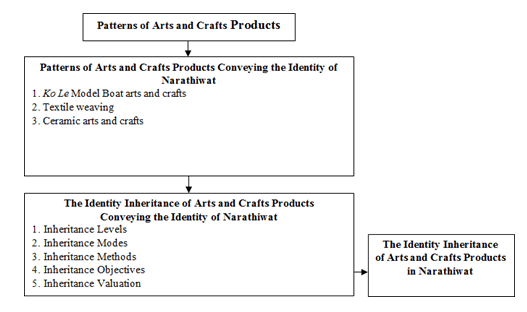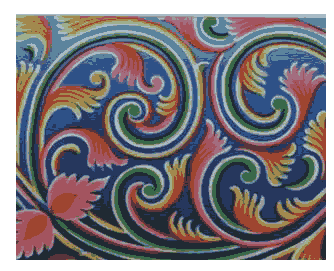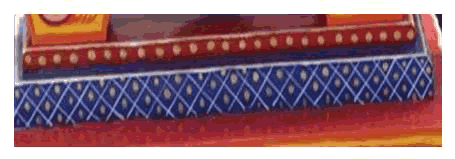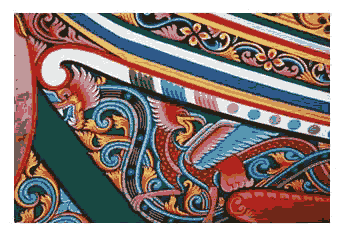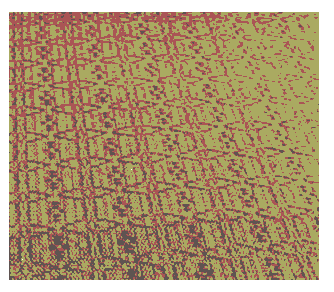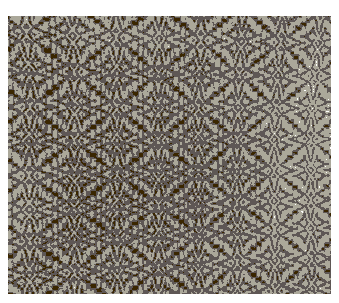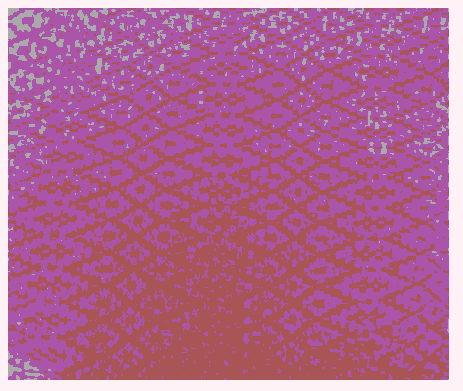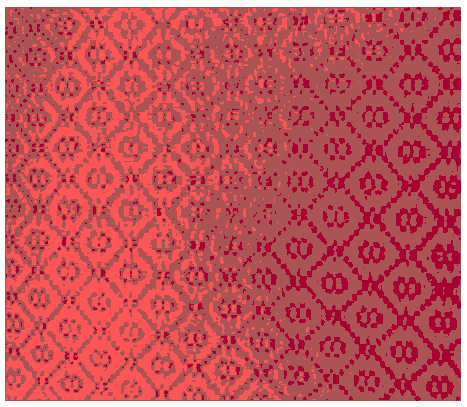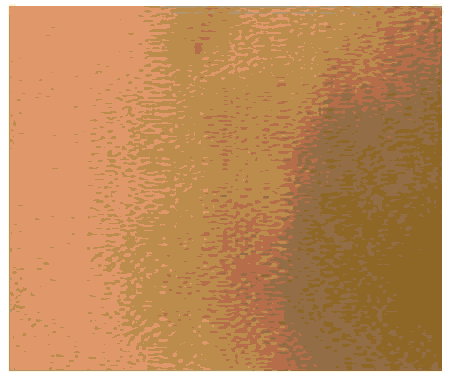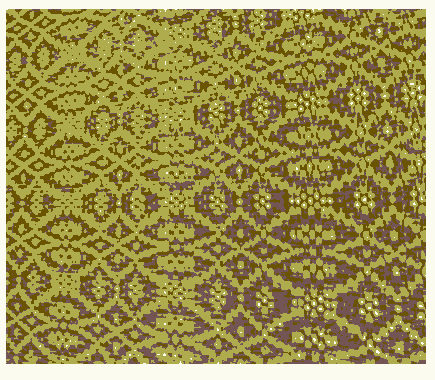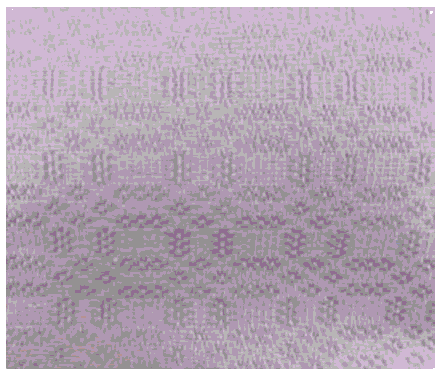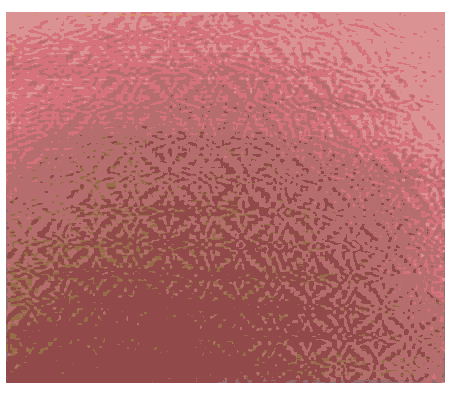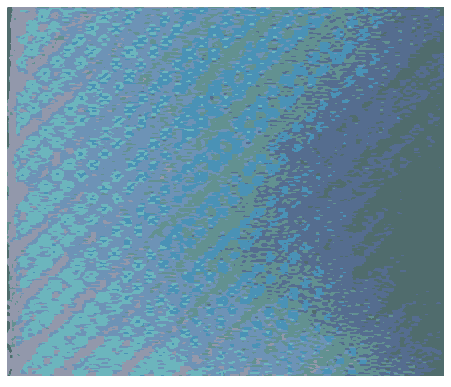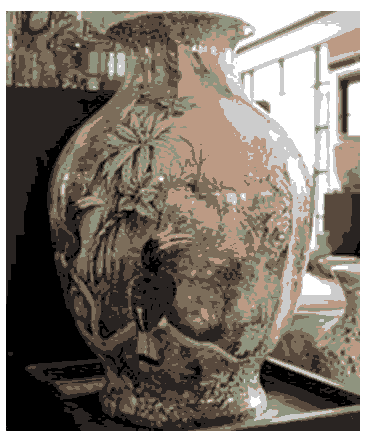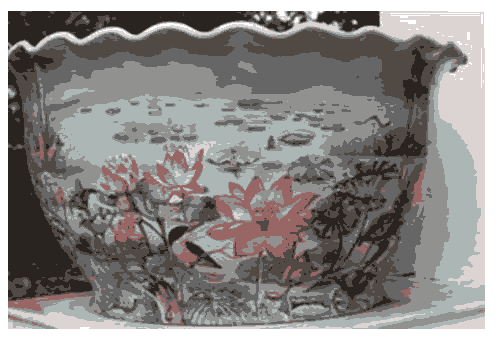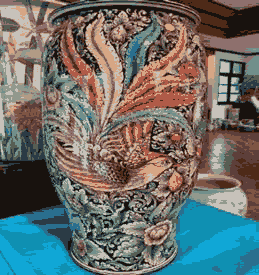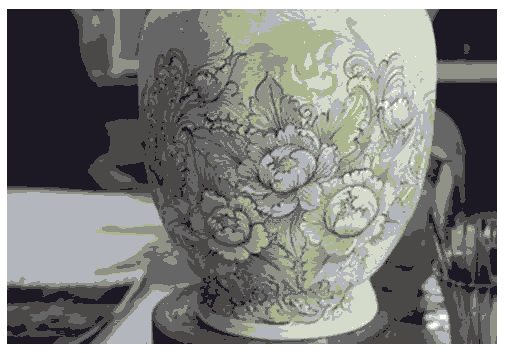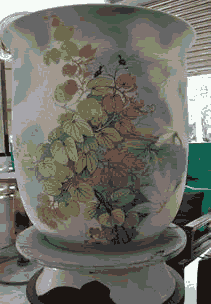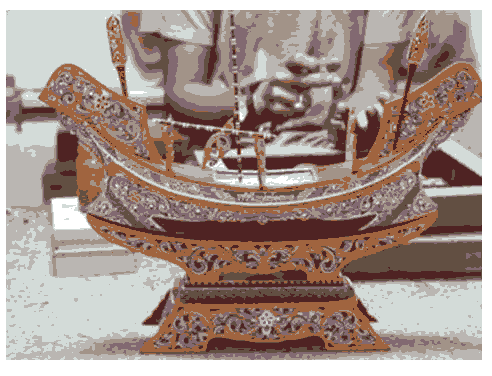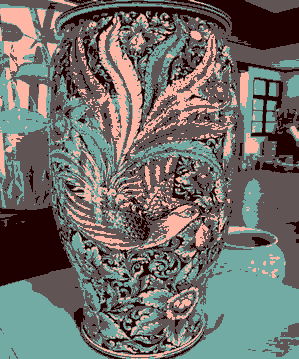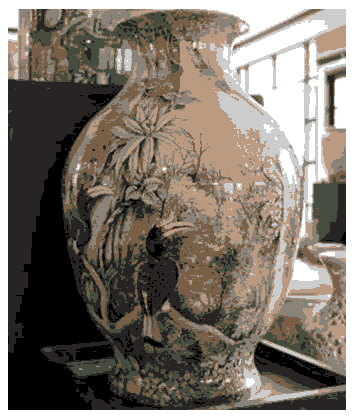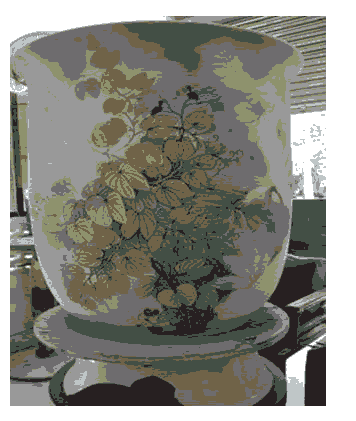Research Article: 2021 Vol: 20 Issue: 6S
The Identity Inheritance of Arts and Crafts Product Patterns (MOTIF) In Narathiwat Province
Chineephen Malisuwan, YalaRajabhat University
Sathita Keawlek, YalaRajabhat University
Sopinya Khun Pukdee, YalaRajabhat University
Romzee Tamasha, YalaRajabhat University
Abstract
This study aimed to investigate the patterns of arts and crafts products in Narathiwat Province portraying its provincial identity, as well as the inheritance of local wisdom in arts and crafts products. The study was developed as qualitative research accounting for a total of six key informants; arts and crafts teachers in Narathiwat Province and members of the arts and crafts groups. A purposive sampling method was applied with an optimization of the semi-structured interview; in-depth interviewing approach, as a research tool. The study also deployed a descriptive analysis for data analysis.
As for the result, the study reveals that: 1) Patterns of the arts and crafts products in Narathiwat Province are of the three patterns; 1.1) a blended pattern of cultures between Thai, Chinese, and Malay, 1.2) a pattern given by the influence of Indonesia, 1.3) a pattern of the local flora and fauna of Narathiwat Province, 2) The patterns of arts and crafts products conveying the identity of Narathiwat Province are inclusive of 2.1) Ko Le model boat pattern combining Patek Sarong of Muslim women, YaWor motif, Javanese motif, Thai motif, dragon motif, and imaginary motif, 2.2) Woven fabric pattern, which is Pikul motif, 2.3) Ceramic pattern covering Patek Sarong motif, hornbill motif, and gold leaves motif, and 3) The local wisdom inheritance of arts and crafts products conveying the identity of Narathiwat Province is reflected through a Ko Le model boat, which deems a significant piece of arts and crafts products and worth to preserve most in comparison with other products due to its noble purpose in preventing youth from drugs dealing and strengthening the relationship between cultures; Thai, Chinese, and Malay.
Keywords
Inheritance, Identity, Pattern, Handicraft Products, Narathiwat
Introduction
Thailand has established a strategic plan for the arts and crafts for the fiscal year 2017-2020, where the Support Arts and Crafts International Centre of Thailand (Public Organization) is held as a responsible entity. The plan emphasizes: 1) collecting knowledge and conserving Thai arts and crafts, 2) promoting the development of arts and crafts products for commercial purposes, 3) developing entrepreneur’s connection network and value chain, and 4) promoting marketing activities domestically and internationally (Fiscal Policy Research Institute Foundation, 2016). The Thai Junior Encyclopedia Foundation by his Majesty King Bhumibol Adulyadej the Great (2020) has defined “art and craft” as a means of promoting Thai people in different regions evolve around the arts and crafts production as a supplementary work in addition to their main occupation in agriculture. The arts and crafts products in the realm of the Foundation for the Promotion of Supplementary Occupations under the patronage of Her Majesty the Queen Sirikit of Thailand was established on July 21, 1976, by Her Majesty the Queen Sirikit of Thailand, who is the Executive Chairman of the Foundation. The promotion of arts and crafts products does not only help increase income to farmers and low-income families but also helps preserve local arts and crafts, which deem as the wisdom of Thai people. Besides, it further develops a wider range of development from the quality of the craftsmanship to the production for the market, as well as drive excellent craftsmanship to become a nationally cultural treasure.
The arts and crafts mobilization in Narathiwat province started in 1973 by Her Majesty the Queen Sirikit of Thailand The Queen Mother granting assistance to the poor families and conferring various professional expertise to the people as a supplementary occupation as to boost income and conserve the state of Thai arts, culture, and local materials. This effort lights how the Narathiwat Provincial Arts and Crafts Promotion Project was originated. The projects include Lipao basketry, Krajood mats basketry, Panan mats basketry, palm leaves basketry, Ko Le model boats, rubber plants leasing for Lipao conservation, pottery (ceramics), embroidery, cotton weaving, silk weaving, mulberry planting, silkworm farming, bamboo basketry, wood carving, artificial flowers, crochet crafting, cloth tailoring, Batik pattern painting, and cotton mixed Krajood curtain making (The Pikun Thong Royal Development Study Center According to the Royal Initiatives,2009).
Such promotion project becomes significant in which Puangngam (2008) claimed that local wisdom is crucial because the past development has deteriorated the community foundation. Thus, wisdom becomes a new interesting innovation as it is made through the accumulation of experiences with a systematic learning process enabling some communities to remain resilient. However, such a learning process relies on communication to convey wisdom to future generations. Kaewthep, et al., (2011) stated that communication is observed as a tool for construction, maintenance, and negotiation. This view is consistent with Fuengfusakul (2003), who illustrated that "identity" depends on the criteria of similarities and differences of communication through symbols, which may have more than one form due to the systematic identity and richness in diversity under different contexts.
The emphasis of wisdom inheritance to maintain the identity of Narathiwat has played a vital role in connecting and tracking the history, background, and relationship between races of Thai Buddhists, Thai Muslims, and Thai-Chinese people. According to the information in relation to the arts and crafts in Narathiwat addressed by representatives from various agencies, including the Community Development Office, the Provincial Agriculture, the provincial commerce office, and the provincial industrial office, it is shown that the arts and crafts products are produced and continuously operated. The information further indicates that a transfer of wisdom is performed consisting of Ko Le model boat products, woven products, and ceramics. As a matter of fact, these products are about to be extinct as the inheritance of the arts is not realized by the currentgeneration.
Therefore, in order to further cherish the wisdom inheritance and conservation of arts and culture of craftsmanship products in Narathiwat, this research is developed to study the identity inheritance in arts and crafts product patterns in Narathiwat comprising Ko Le model boat products, woven products, and ceramics. This information helps realize benefits and commercial applications to enhance the quality of life of people in Narathiwat Province.
Research Objectives
1) To study the characteristics of the patterns in the arts and crafts products of NarathiwatProvince.
2) To explore the patterns of the arts and crafts products conveying the identityof Narathiwat Province.
3) To examine the wisdom inheritance in the arts and crafts products portraying the identity of Narathiwat Province.
Relevant Studies and Research
Concept of Inheritance
Cultural inheritance allows the progression in culture, yet changes have emerged within the process; the succession is incompletely transferred. Although teachers directly teach the students, they themselves still carry differences from teachers. The new disciples or generation will deviate further from their previous generation from time to time. There is clearly a difference between the beginning and the end. At present, there are various communication channels, allowing the culture to spread widely (Changkwanyuen, 2017). Teelakun (2018) depicts that inheritance can be divided into four categories; inheritance within a household, out-of-household inheritance, inheritance due to working experience, and inheritance due to real situations. This argument is also consistent with Kaewthep, et al., (2006) describing methods of inheriting and transferring knowledge, wisdom, and culture. The approaches lie within the following points: 1) the transmission must be equipped with knowledge; be it visible and invisible, such as beliefs, prohibitions, practices, and environment relationships, 2) method or process of transmission, 3) traditional communication in line with the communication principle of four aspects: the message, the sender, the channel or the media, and the receiver, 4) the inheritance must evolve around the content carrying why the students should study for in order to ensure that learning becomes meaningful to learners, and 5) the sender must have complete knowledge, while the receiver should have some knowledge or possess shared knowledge in order to communicate and understand one another of the true value, resulting in the realization of inheritance and preservation of the culture.
Concept of Identity
Cultural identity is an important aspect of the relationship between local people and foreigners (Sutham, 2020). Thus, symbolic system and meaning are all essential elements in the production, consumption, regulation, cultural representation, and identity of people. The symbol means a sign that connects between the meaning and the sign. This connection is seen as social cultivation rather than a natural connection (Panichsamai, 2017). There is a new social movement in the present attempting to change values and develop lifestyle choices by creating cultural innovations and a new way of life. Identity, therefore, is a new social process tool the community applies in knowledge creation and understanding of the economy and culture. This circumstance has always been daily life event of everyone in different communities (Jitnirat, 2010).
Concept of Arts and Crafts
“Arts and Crafts” means the encouragement towards Thai people in different regions to work in arts and crafts production as a supplementary occupation in addition to their main occupation in agriculture. The arts and crafts works are governed under the Foundation for the Promotion of Arts and Crafts under the patronage of Her Majesty the Queen Sirikit of Thailand. The Foundation helps conserve local arts and crafts works that are considered as the wisdom of Thai people. The Foundation also works on improving the quality of craftsmanship, as well as the ability to make products to meet the market demand. In addition, it intends to preserve excellent handicrafts as a nationally cultural treasure (Thai Junior Encyclopedia Foundation by His Majesty King (BhumibolAdulyadej the Great, 2020). Undoubtedly, the arts and crafts urge Thai people in different regions across the nation to produce handicrafts products as a supplementary work while preserving local arts and crafts, which are considered as the wisdom of Thai people (Thai Junior Encyclopedia Foundation by His Majesty King (BhumibolAdulyadej the Great, 2020) through wisdom inheritance with the optimization of communication in order to maintain and secure the identity (Kaewthep et al., 2011).
Conceptual Research Framework
Inheriting the identity of arts and crafts products in Narathiwat Province has been conceptualized in line with the theory of production and reproduction for cultural inheritance. Concepts and theories of existence and transformation of identity explain serves the culture as an important factor in identity formation. The process consists of cultural heritage, living or contemporary culture, wisdom and Technology. Data on arts and crafts products of Narathiwat Province and relevant research can be categorized into five components: inheritance level, inheritance pattern, inheritance method, inheritance purposes, and inheritance definition (Khunsri, 2014; Office of Contemporary Art and Culture, 2016; Phadungcheevit, 2008; Hinwiman, 2005; Kaewthep et al., 2008). In order to diversify the unique patterns conveying the identity of Narathiwat Province, it can be observed in the following discussion shown in Figure 1.
Research Methods
In conducting a research study on the identity inheritance of the arts and crafts products in Narathiwat Province, the qualitative research method is selected and can be explained as follows:
Key Informants
The sample of this study includes teachers of arts and crafts in Narathiwat under the department of Ko Le model boat, ceramics, and textile weaving and the members of Ban Thon Ko Le Model Boat Training Center, Ban Tor Lhang Textile Arts and Crafts Group, Ceramic Arts and Crafts Center at Thaksin Ratchaniwet Palace. This study deploys a purposive sampling method expecting those with experience and awards totaling six people:
1) Ko Le Model Boat Art and Craft teacher serving as the president of Ban Thon Ko Le Model Boat Group;
2) A member of Ko Le Model Boat Art and Craft ProductsGroup;
3) Weaving Arts and Crafts teacher serving as the chairman of Ban Tor Lhang Textile Arts and Crafts Group;
4) A member of Ban Tor Lhang Textile Arts and CraftsGroup;
5) Ceramic Arts and Crafts Product teacher;
6) Head of the Ceramic Arts and Crafts Center at ThaksinRatchaniwetPalace
Research Tools
The research tool was a structured interview detailing out questions on the patterns of arts and crafts products, the patterns of arts and crafts products conveying the identity of Narathiwat Province, and the wisdom inheritance of arts and crafts products expressing the identity of Narathiwat. The researcher conducted in-depth interviews with teachers of arts and crafts in Narathiwat and members of the arts and crafts groups. Data were collected at the arts and crafts group offices in MueangNarathiwat District and TakBai District. The interview was carried out three times approximately about 4 to 6 hours for each time. Upon validating content by the experts, each question item retrieved the Index of item Objective Congruence or IOC value in between 0.60-1.00, meeting the specified criteria exceeding 0.50 (Tuntavanitch & Jodasri, 2018). In fact, a proper correction was also observed with the advice of three experts consisting of two academicians in communication arts, and one academician in visualarts.
Data Collection
1) Related documents, concepts, theories, and research were studied and reviewed to obtain basic information for developing a conceptual framework on the identity inheritance of arts and crafts products in Narathiwat Province.
2) A fieldwork was conducted at Ban Thon Ko Le Model Boat Arts and Craft Products Training Center, Ban Tor Lhang Textile Arts and Crafts Group, and Ceramic Arts and Crafts Center at Thaksin Ratchaniwet Palace. In this regard, the researcher collected data by using an in-depth interview method, contacting key informants and scheduling the date, time, and place of the interview, requesting permission to record audio during the interview and take notes of the interview with a structured interview questioning the patterns of arts and crafts products that convey the identity of Narathiwat ProvinceandthewisdominheritanceofartsandcraftsproductsportrayingtheidentityofNarathiwatProvince. The key informants were 6 people including teachers of arts and crafts in Narathiwat and members of the arts and crafts product groups.
Data Analysis
The researcher analyzed the data from the in-depth interviews focusing on the perspectives of key informants using systematic descriptive analysis according to the subject studied covering the patterns of arts and crafts products, the arts and crafts products conveying the identity of Narathiwat, and the wisdom inheritance of arts and crafts products that convey the identity of Narathiwat. The data were divided into groups based on content, variables, specific core themes with the selection of relevant information to analyze, and synthesize in order to draw conclusions and recommendations.
Research Results and Discussion
Characteristics of the Patterns of Arts and Crafts Products in Narathiwat Province are as Follows: Ko Le Model Boat Arts and Crafts
The pattern of the Ko Le model boat is taken from the designs created by Ko Le craftsmen in which the villagers in Narathiwat use the boats for their livelihood. The “Kho Le” or “Ko Le” means leaning back and forth, shaking, and swaying, which indicates the nature of the boat while surfing or sailing on the sea. This is because Narathiwat Province is somewhat interrupted by the northeast monsoon close to the Gulf of Thailand. As a result, the rainy season lasts long, and the weather condition often changes. Considering this direction, Ko Le boats, therefore, has been designed specifically to serve this region. Its pattern was blended within the culture of Thai, Chinese, and Malay, such as line drawing imitating Muslim women's Patek Sarong, pattern drawing from the mural paintings in the Ubosot (temple) of Thai Buddhism, and animal drawing with the influence of Chinese cultures, such as a dragon. (Figure 2, 3, 4)
Arts and Crafts in Textile
Woven fabric patterns of the Narathiwat Provincial Arts and Crafts Group are the patterns inspired from each type of flower with the fact that women in Narathiwat Province tend to wear and use the sarong of Indonesia designed with beautiful flowers and bright colors. Her Majesty the Queen Sirikit of Thailand visited the people of TakBai District, Narathiwat, and later had a visit at Kantharikaram temple to pay homage to the abbot of WatKantharikaram or Wat Tor Lhang. During this visit, the royal initiative was bestowed to Ban Tor Lhang Weaving Group with the support to enrich flowers weaving patterns from the Pikunthong Royal Development Study Center. The patterns can be characterized as follows. (Figure 5, 6, 7, 8, 9, 10, or 11, 12, 13, 14)
Arts and Crafts in Ceramics
Narathiwat Province is an area with soil and kaolin possibly used to craft ceramic products, especially Rangae District. This production can generate income in addition to agricultural occupation of people in the area. It also helps reduce drug dealing and the unemployment rate. Her Majesty the Queen Sirikit of Thailand has ordered the establishment of Thaksin Ratchaniwet Special Arts and Crafts Center served as an external ceramic center to the Thaksin Ratchaniwet Palace, Mueang Narathiwat District. It is the center focusing on ceramic production. The current ceramic product arts and crafts in Narathiwat Province are inspired by Muslim women's Patek Sarong from Indonesia. The arts and crafts are also inspired by animals found in Narathiwat, such as hornbills and golden leaves, specifically symbolizing the identity of Narathiwat. (Figure 15, 16, 17, 18, 19)
Based on this study, it reveals that there are three patterns of arts and crafts products in Narathiwat Province: 1.1) Blended pattern inspired by different cultures of Thai, Chinese, and Malay, 1.2) Pattern paved by the influence of Indonesia, 1.3) Pattern inspired by plants and animals grown in Narathiwat Province. This result is consistent with Reed II et al. (2012) depicting that identity can be defined as any labels of any categories the consumers associate themselves in line with the image in which how individuals see, think, and feel. In addition, the process and expression of the identity should consist of 1) Identity Salience; identity processing is enhanced when identity becomes a clear component, 2) Identity Association; stimulus association with a positive and distinctive identity enhances a person's response to a stimulus, 3) Identity Relevance; an intentional assessment of a stimulus depends on how identity is diagnosed, (4) Identity Verification: Individuals control their behavior to manage and reinforce their identity, and (5) Identity Conflict; behaviors linked to their identity help consumers deal with the relative prominence of various identities to demonstrate the potential benefits.
Patterns of Arts and Crafts Products Conveying the Identity of Narathiwat Province are Detailed as follows
Ko Le Model Boat Arts and Crafts
According to this study, it shows that the pattern of the Ko Le model boat portraying the identity of Narathiwat is the pattern combining Muslim women's Patek Sarong motif, mural arts motif of Buddhist temples, and imaginary motifs of the artists. It also indicates that the pattern is integrated from Chinese culture in terms of dragon drawing. Other drawings are also observed, such as birds and fishes with bright coloring and cool tones. Beside using the boat for fishing, Ko Le boat is also used as a tool for activities of the people in Narathiwat during the celebration of Eid or fasting of Muslim communities as shown in Figure 20.
Figure 20: The Ko Le Model Boat Is Painted With The Combination Of Patterns Inspired By Muslim Women's Patek Sarong Motif, Thai Motif, And Imaginary Motifs
Source: ChineephenMalisuwan
Arts and Crafts in Textiles
According to the study, it has found that woven cloth pattern expressing the identity of Narathiwat Province is Pikul pattern, which is the provincial flower of Narathiwat. During the time of Narathiwat’s celebration of its 100th anniversary, there was a campaign to wear Pikul flower-patterned fabrics to boost income for the arts and crafts group. Weaving was originally made and used a simple technique with free flows of patterns. However, in the present time, the weaving technique has been developed and applied 7 Ta Kor (harness) with 12 stepping, making fabric patterns become exquisitely beautiful and prominent. The pattern can be seen in Figure 21.
Ceramic Arts and Crafts
With the result of the analysis, it illustrates that Patek Sarong pattern is only integrated for Narathiwat Province, developing from Ko Le boat patterns blended with the patterns on the Patek sarong. This art conveys the way of life of those living in the lower south of Thailand. The art also receives inspiration from paradise birds (Karawake) inhabiting in the Himmapan forest, Ko Le boat pattern, and Indonesia sarong. The sarong is a cloth wrapping around the body. The call of "Patek" means a part of the cloth that must be worn to match the hips with colorful patterns. The origin of patterns in Narathiwat or previously called as "Bang Nara" comes in during those days when trades were begun by various cities. It is blended with the patterns on the sarong cloth of Muslim women with the patterns on the boats used to welcome visitors. In order to honor them, the villagers paint the patterns on the fishing boats. Under the drawing of the bird, it is purely made based on the imagination together with the expression of the villagers' way of life. Besides, there is also a hornbill pattern symbolizing Narathiwat, while the golden leaves pattern is unique golden velvet leaves in Narathiwat Province, and it is the first place in Thailand the leaves were ever found. The details are discussed in Figure 22, 23, and 24.
Furthermore, the patterns of arts and crafts products conveying the identity of Narathiwat are seen through 1) patterns of Ko Le boat combining the Patek sarong motif of Muslim women, YaWor motif, Javanese motif, Thai motif, dragon motif, and imaginary motifs, 2) pattern of woven fabric, 3) ceramic patterns, which are Patek sarong pattern, hornbill pattern, and golden leaves pattern. In summary, these patterns of arts and crafts products carrying the identity of Narathiwat Province are inspired by the influence from Indonesia, and the flora and fauna of Narathiwat Province. This finding is consistent with (Kaewthep et al., 2011) who claimed that communication is always a tool for constructing, maintaining, and negotiating identity at all times. This process can be seen from the way humans objectively communicate; “who are we? what race do we belong? what gender are we? what age are we? where were we born?” while we use communication to tell others; “who do we become? who is he? and finally question “how are we different to him?” The same finding is also supported by Voyer, Kastanakis & Rhode (2017) explaining that cultural differences contribute to identity development. According to Spielman, Maguire, and Charters (2020), the social pattern of consumer reflection, the decoding of national identities, the dynamics of national identity, and the sustainable significance of consumption while revealing national identity should be given priority to cultural capital. Therefore, the local flora or fauna that represents the identity of Narathiwat Province is considered the cultural capital of Narathiwat Province.
The Wisdom Inheritance of Arts and Crafts Products that Convey the Identity of Narathiwat Province
The transfer of wisdom or wisdom inheritance of arts and crafts products expressing the identity of Narathiwat Province can be observed in the following Table 1.
| Table 1The Wisdom Inheritance of Arts and Crafts Products That Convey The Identity of Narathiwat Province | |||||||
|---|---|---|---|---|---|---|---|
| Wisdom Inheritance | Arts and Crafts Products | ||||||
| Ko Le Model Boat Arts and Crafts | Textile Arts and Crafts | Ceramic Arts and Crafts | |||||
| 1.Levels | Inheritance | 1. Household2. Community | 1. Household2. Community | Community | |||
| 2. Inheritance Modes | 1. Inheritance within familymembers2. Inheritance from friends3. Inheritance from arts and craftsteachers4. Self-learning and Self- experience | Inheritance from and crafts teachers | arts | Inheritance from crafts teachers | arts | and | |
| 3. Inheritance Methods | 1. Demonstration2. Training3. Word ofmouth | 1. Demonstration2. Training | 1. Demonstration2. Training | ||||
| 4. Inheritance Objectives | 1. Transferringwisdom2. Protecting youth from drugdealing3. Earning income for a family4. Building arelationship in a family andpeer group | 1. Inheriting wisdom using a waving technique of seven Ta Kor with twelve stepping2. Earning income for a family3. Building arelationship in a family and peer group | 1. Transferring wisdom2. Earning income for a family3. Building a relationship in a family and peergroup4. Creating awareness of kaolin inNarathiwat | ||||
| 5. Value Creation of Inheritance | To realize the relationship between the culture of Thai, Chinese, and local Malay | To share the pride in the identity of the provincial fabric patterns of Narathiwat | To realize the relationship between the culture of Thai, Chinese, and local Malay, as well as to create awareness ofthe potentials of resources in the area | ||||
According to Table 1, it indicates that Ko Le model boat is an important handicraft product and found worthwhile for conservation in comparison with other products, because it posits a purpose of inheritance, prevent youth from drug dealing, and relates the relationship between Thai, Chinese, and Malay cultures in the past. This finding is consistent with Bellow (2014) claiming that cultural awareness is an important component and has its strategic importance as an effective tool of communication. This awareness creates a system of communication between the sender and the receiver of the “peaceful product.” Nason (1984) said that the changing local handicrafts can provide important and different perspectives to concurrently change ethnic identities. However, patterns derived from various wisdom should not be forgotten. Prommanot (2018); Thammachai (2018) addressed that the success of wisdom inheritance in a sustainable manner depends on expertise or skill, curiosity, educational process, inheritance ideology, and inheritance communication that is done in parallel with the conservation and restoration of natural resources.
Summary of Research Results
Identity inheritance of arts and crafts products in Narathiwat can be summarized as shown in Figure 24.
In accordance with Figure 24, it can be concluded that the identity inheritance of arts and crafts products in Narathiwat Province happens at the household and community level, where the sender comes from family members and arts and crafts teachers. The process is performed to inherit wisdom, earn a living, build relationships with family and friends, prevent youth from getting involved in drugs, and create awareness of benefits from materials in Narathiwat Province through methods of demonstration, training, and word of mouth. Both sender and receiver share the same quality of expertise or skill, curiosity, educational process, and inheritance ideology. The receiver may be family members, students, members of the arts and crafts, or a self-learning individual, allowing the relationship realization between Thai, Chinese, and Malay cultures, and sharing the pride in the identity of the provincial arts and crafts products in Narathiwat. In addition, the inheritance should be carried out along with the conservation and restoration of natural resources.
Research Benefits
It can be expanded further in development, wisdom inheritance, and preservation of cultures, and arts and crafts products in Narathiwat Province. It also enables for commercial applications to enhance the quality of life of the people in Narathiwat Province.
Research Recommendations
Suggestions in the Application of the Research Results
1) The Ministry of Tourism and Sports should formulate policies in connecting tourism with social capital through arts and crafts products.
2) A cooperation of every stakeholder, including government, manufacturers, and technology, should be established to further realize business innovation.
Suggestions for Further Research
1) A research study on product characteristics as a medium of intercultural relations building should be further investigated.
2) A research study on participative communication of the community for sustainable development through the arts and crafts products should be looked at.
Research Limitations
As part of the communication process, the Malay language is required to communicate while collecting data and paving understanding. Thus, the Malay interpreter was asked to support with the result interpretation and ensure that the analysis of the research results was done correctly.
References
- Bellou, F. (2014). Cultural awareness in peace operations: Effective marketing or strategic communications. Procedia-Social and Behavioral Sciences, 579-587.
- Changkwanyuen, P. (2017). Cultural concepts. Bangkok: Chulalongkorn University Press.
- Fiscal Policy Research Institute Foundation. (2016). Strategic plan of the support arts and crafts international centre of Thailand (public organization) for the fiscal year of 2017-2020. Bangkok: The Support Arts and Crafts International Centre of Thailand (Public Organization).
- Fuengfusakul, A. (2003). Identity. Bangkok: National Research Council of Thailand.
- Jitnirat, N. (2010). Community identity: Identity and development for community placement. Songkhla: Thaksin University.
- Kaewthep, K. (2006). Strong local media: Strong community health. Bangkok: Thammasat Printing House.
- Kaewthep, K. (2011). Old media-new media: Signs identity ideology. Bangkok: The Thailand Research Fund.
- Khunsri, K. (2014). Communication and adaptation for inheritance of local: A case study of Lanna Folk Song "Sor" in Chiang Rai. Bangkok: Dhurakij Pundit University.
- Nason, J.D. (1984). Tourism, handicrafts, and ethnic identity in Micronesia. Annals of Tourism Research, 421- 449.
- Panichsamai, P. (2017). Cultural identity design for sustainable tourism of Tha Pear district, Nakhon Si Thammarat province. Under the Graduate School (Unpublished Master’s dissertation). Silpakorn University, Bangkok, Thailand.
- Peuchthonglang, P., &Peuchthonglang, P., & Atsadonsak, N. (2021). SattapanLanna : The Bhuddist Art in Lanna,Thailand. Elementary Education Online, 20(5), 1577-1591.
- Peuchthonglang, P., &Peuchthonglang, P., & Atsadonsak, N. (2020). Inventive Buddhist Craftsmanships ofSociety in Northern Thailand. Solid State Technology, 63(2s), 9120-9134.
- Puangngam, K. (2008). Community and local self-governance. Bangkok: Thammasat University Bookstore.
- Prommanot, P. (2018). Pound nets fisher: The local wisdom and inheritance of Samutsongkram fisheries culture. Under the faculty of education (Unpublished Doctor’s thesis). Chulalongkorn University, Bangkok, Thailand.
- Reed II, A., Forehand, M.R., Puntoni, S., & Warlop, L. (2012). Identity-based consumer behavior. International Journal of Research in Marketing, 310-321.
- Spielman, N., Maguire, J.S., & Charters, S. (2020). Product patriotism: How consumption practices make and maintain national identity. Journal of Business Research, 389-399.
- Sutham, P. (2020). The identity inheritance of long drum among Shan people in Rayong province. Music and Performing Arts Journal, 6(1), 103-121.
- Teelakun, S. (2018). The transmission of Mangkala in institutions of higher education in accordance with folk philosophers in the lower northern of Thailand. Under the College of Music (Unpublished Doctor’s thesis). Mahasarakham University, MahaSarakham, Thailand
- Thammachai, M. (2018). The succession and creation of Lanna Buddhist arts: A case study of PhraBenjiminSuta's handicraft in WatHadnark, Sop Tia Sub-District, Chomthong District, Chiang Mai Province. Under the Faculty of Buddhism (Unpublished Master’s dissertation). Mahachulalongkornrajavidyalaya University, PhraNakhon Si Ayutthaya, Thailand
- Thai Junior Encyclopedia Foundation by His Majesty King BhumibolAdulyadejThe Great. (2020).
- Handicrafts. Retrieved May 20, 2020, from https://saranukromthai.or.th/sub/book/book.php?book=29&chap=1&page=t29-1-infodetail01.html
- The Pikun Thong Royal Development Study Centre According to the Royal Initiatives. (2009). Projects summary of the royal initiatives in Narathiwat for the year 1973-2009. Narathiwat: Office of the Royal Development Projects Board.
- Tuntavanitch, P., & Jindasri, P. (2018). The real meaning of IOC. Journal of Educational Measurement, 24(2), 3-12.
- Voyer, B.G., Kastanakis, M.N., & Rhode, A.K. (2017). Co-creating stakeholder and brand identities: A cross- cultural consumer perspective. Journal of Business Research, 399-410.
